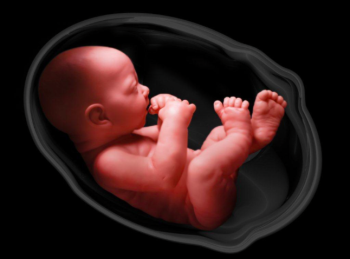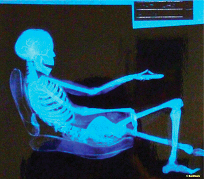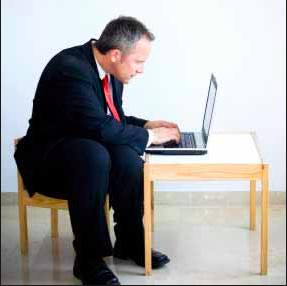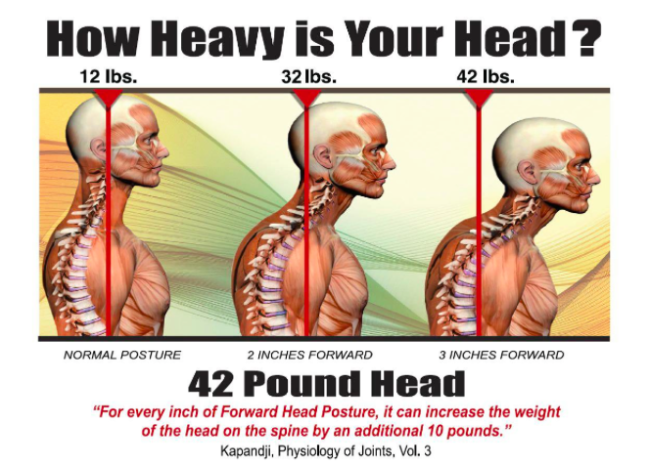Why [Not] Crawl?
Jan 07, 2015
I got off the phone just before lunch with a very good friend of mine who also happens to be a trainer. He was seeing a client tomorrow who was just coming back from a broken wrist and was going to use Baby Crawling to help her get her wrist range of motion and strength back. “Good idea” I told him.
Plus, he can help her reintegrate the function and use of that wrist with the rest of her arm and her shoulder, and now come to think of it, the rest of her body, in a safe and gentle way.
When I got home (he and I were chatting while I was driving), I pulled out the ol’ 100# chain and harness and dragged it uphill, in the snow (seriously, it was uphill and the snow is melting) - but not uphill both ways (think about it) - for 100 yards.
Our conversation got me to thinking:
Why Crawl?
Seriously.
We’re not babies anymore.
Crawling should be reserved for babies, shouldn’t it?
After all, we know how to walk, run, climb, etc. Why the need to go back on the ground? And, aren’t there better exercises we can be doing than crawling?
Great questions.
It’s true, we’re not babies anymore, but honestly, you might not know it from the positions we spend our lives in. Consider that most people sit on their butts for 8 to 12 hours (or more) a day, and lie on our backs sleeping, with our heads propped up for another 7 to 8 hours or so, and that leaves very little time to much of anything else. We’re not, as Tim has said so many times, living according to our design.
Seriously, most people sit, slumped and slouched, back supported and head protruding forward. There’s not much difference between that position and the position a fetus is in while in the womb.


The reality is, our bodies do not operate the way they were designed to.
Our head is out of position, which throws off our posture.
Our breathing is shallow and chest-driven.
Our core is weak from disuse.
And our butts, (our engines) are flaccid and flabby from sitting on them all day long.

Not to mention we sip on sugary over-caffeinated drinks and gorge on processed franken-foods multiple times per day so our digestive systems resemble hazardous waste facilities, manifesting themselves in excess stored body fat.
In fact, almost nothing about our modern, convenient, technologically-driven life does anything to help us physically. Truth be told, most of it sabotages us from ever living up to our true physical potential.
Which gets us back to crawling. Specifically, Baby Crawling. That’s right - crawling around on the floor on your hands and knees like a baby. Is it just a fad, or complete stupidity, devoid of scientific justification as some would say? Or is there actually some merit - more than just anecdotal “I feel better from doing it” proof?
Well, let’s take a closer look, shall we?
As mentioned earlier, the modern seated society has aberrant posture. Most people walk around with forward head carriage.
This forward head carriage or posture changes the way your body functions. Consider this:

That’s right - the weight of your head on your neck increases by 30 pounds if it moves forward just 2 inches off its normal axis.
What do you think that does to the rest of your body?
Simple.
Since your body is designed to follow your head, your entire body gets pulled forward.
This compresses the vertebrae in your neck which can lead to a myriad of other problems, such as:
- Compressed nerves
- Arm and shoulder pain, tingling, and numbness
- Shoulder pain and loss of range of motion, including rotator cuff issues
- Degenerative disc disease
- Thoracic outlet syndrome
- TMJ
- Upper back pain
- Lower back pain
- Golfer’s and Tennis Elbow
- Neck pain
- Migraine headaches
- Carpal tunnel syndrome
- And more…
Since posture is a reflex, and is both static and dynamic, no amount of stretching and strengthening exercises is going to help your posture in the long run. Neither is thinking about standing up straight or tall.
Which begs a question:
How did we achieve our posture in the first place?
The cervical curve (the shape of your neck) was developed when you started lying on your tummy as an infant. It was further developed when you were on all fours (quadruped) and guess what else?
That’s right.
When you crawled around on your hands and knees.
 Carrying that big ol’ melon head of yours when you were a baby, which weighed approximately a third of your body weight, trengthened your neck muscles and all the muscles of your posterior chain, especially on your torso, to enable you to one day stand upright and walk. And lifting your head into extension, stimulates and activates your vestibular, or balance system, which in turn controls your balance, posture, and coordination. In fact, your ability to and mastery of head control, is fundamental to having proper balance, posture, and coordination. And we can both agree, that a forward head posture/carriage is a loss of head control. Which in turn means there is going to be a loss of balance, posture, and coordination at some level or another.
Carrying that big ol’ melon head of yours when you were a baby, which weighed approximately a third of your body weight, trengthened your neck muscles and all the muscles of your posterior chain, especially on your torso, to enable you to one day stand upright and walk. And lifting your head into extension, stimulates and activates your vestibular, or balance system, which in turn controls your balance, posture, and coordination. In fact, your ability to and mastery of head control, is fundamental to having proper balance, posture, and coordination. And we can both agree, that a forward head posture/carriage is a loss of head control. Which in turn means there is going to be a loss of balance, posture, and coordination at some level or another.Recall that one of the symptoms of forward head posture and a loss of head control is shoulder pain/dysfunction. Crawling gently retrains proper functioning of the rotator cuff and reestablishes the proper coordination and control of the shoulder blades. There’s a gentle reflexive muscular action that occurs in the the shoulder and arm muscles that goes beyond the conscious control of tensing one’s muscles to make them work. These reflexive muscular actions restore the natural strength of the upper body.
Furthermore, sitting all day, especially with the back supported, can inhibit the deep abdominal and core musculature, creating not only a stress to the lumbar spine, but a loss of the lumbar curve, which in turn, creates a loss of hip mobility.
Crawling helps restore the natural lumbar curve, restores normal hip function, and re-establishes control of the deep abdominal musculature. It’s also contra-lateral limb movement, tying the left upper extremities, particularly the shoulder to the right lower extremities, particularly the hip, and vice versa, which once formed the foundation for gait - or walking - and now reestablishes the gait pattern.
Finally, crawling, because it’s contralateral, ties both hemispheres of your brain together, creating new neural connections and strengthening old ones, enabling your brain and your body to work faster and more efficiently.
To recap, here’s why you should crawl:
- Re-establishes head control and therefore posture (Head control is essential for proper functioning of the body’s muscles.)
- Sharpens the sensitivity of the vestibular (balance) system, thereby improving balance, posture, and coordination
- Re-establishes spinal curves, which in turn improve posture and normal muscular function and control
- Re-establishes proper functioning of deep abdominal / core musculature
- Re-establishes proper hip mobility
- Creates and strengthens neural pathways in the brain, enabling the body and mind to function more efficiently
As you can see, crawling is better for you than not crawling. Our environment now controls us. We literally are products of our environment. Crawling is one of the simplest, easiest, and fastest ways to overcome our environments and move the way we were designed to move.
So why crawl?
“Why not crawl” is the better question.
Comments (0)
Please login to comment.